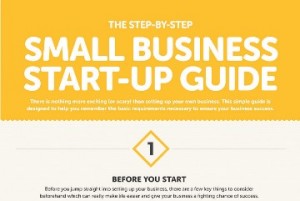Facebook and Instagram are making waves in the social ad space. eMarketer is estimating that Facebook will capture nearly 65% of social network ad revenues in 2015. And while Instagram doesn’t yet carry as much weight, the channel is growing rapidly. According to an eMarketer forecast, Instagram global mobile ad revenues will account for more than 10% of Facebook’s global ad revenues in 2017.
Though marketers are investing more in these channels, creative assets and targeting techniques are still stuck in the past. Those who are tapping into innovative approaches, however, are seeing dramatic improvements in the performance of their ads.
Last week, Curalate partnered with Chief Marketer to deliver a webinar on how brands can increase their return on Facebook and Instagram Ads. Throughout the session, Matt Langie, CMO at Curalate, and Loren Mattia, Content Marketing Manager at Z Gallerie, offered best practices for marketers who want to get the most out of their investments on Facebook and Instagram.
You can view a replay of the presentation by registering here (the replay link will then be sent via email). For those who are pressed for time, we’ve compiled a TL;DR below.
1. Spruce up your product feed.

During the session, Matt delved deeper into Facebook Dynamic Product Ads (DPAs). DPAs help advertisers promote relevant products to shoppers browsing their brand’s product catalog across any device. According to Facebook, they work best for e-tailers with high web traffic and large inventory who want to re-engage their shoppers.
When using Facebook DPAs, a number of benefits come into play, Matt said. Essentially, these ads allow brands to target people who have visited their site and shown interest in a particular product. These are consumers who abandoned without making a purchase, but haven’t yet bought from a competitor. Because Facebook relies on existing product feed information to run DPAs, there’s no need for marketers to invest in custom creative.
Here’s the issue: A lot of brands are still relying on stock imagery for their product feeds. While stock images certainly serve their purpose, marketers need to keep in mind the type of content that pervades Facebook: party invites, engagement announcements, cute pet photos, debates and more. A stock image from a brand won’t do much to cut through the noise.
So what’s the “right” approach? Make sure the photos in your product catalog fit into the context of human experiences. Show people enjoying the products you sell in real-life scenarios. You can do this by either collecting photos from your fans or by creating beautiful editorial images yourself. (Hint: Your Instagram channel may already be filled with them; consider tapping into the wealth of images your community managers are already creating.)
Those who incorporate experiential photos into their product feeds see great results with their Facebook DPAs. “Brands that we work with are seeing a 63% increase in click-through rate as a result of putting their products in the context of lifestyle experiences,” Matt shared.

2. Think mobile.

Some 38% of Facebook’s monthly users are mobile-only. Instagram is a mobile-first platform. While both Facebook and Instagram cater to smartphone and tablet users, advertisers need to think beyond these platforms.
If marketers want to get the most of their ads, their landing pages need to be optimized to convert customers who click through to them. Nothing drives a mobile user away like arriving at a page that is not optimized for that device.
3. Create stronger targeted audiences.

A lot of advertisers rely on their brands’ Facebook fans to create targeted audiences for Instagram. While this is a good place to start, someone who has demonstrated interest in a brand on Facebook hasn’t necessarily shown intent to purchase.
By harnessing engagement signals from fans on other channels, brands can create stronger targeted audience segments on Instagram.
Blog visitors, for example, have demonstrated interest in a brand’s content, and have shown some sort of intent to purchase. Brands already have data on how blog readers are engaging with that content, their demographics and more. Creating a target audience on Instagram that looks like your blog audience is one way to apply data you already have to better target new customers.
4. Be relevant.

A best practice for brands that are investing in Instagram ads is to analyze the type of content that drives the most engagement organically and transform it into sponsored content.
The Z Gallerie team, for example, has noticed that fans engage more with photos that feature very personal spaces with theatrical elements. Fans also respond well to content that announces a sale or some sort of deal.
Their sponsored ads reflect those points. “We like to drive leads to our sales. That’s what many of our customers are looking for. Some of items are expensive, so a lot of our customers are looking for deals when they become available,” Loren said.
Loren also finds that in the fall and winter, the brand receives an uptick in engagement on their entertaining-focused content – both online and offline. “A lot of customers go to our stores and see our very ornate pieces, and basically say that they want to buy the whole setup because they aren’t sure how to put it together without our help. So, we recently did some entertainment guide pieces as sponsored content.”
To the brand, there’s value in driving traffic and revenue back to the site, and having people consume their informative pieces of content.
Digital & Social Articles on Business 2 Community(74)
Report Post






